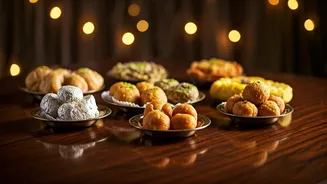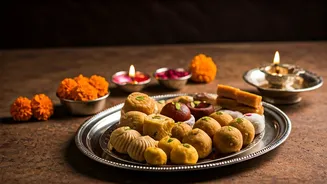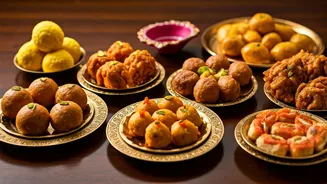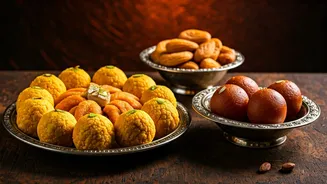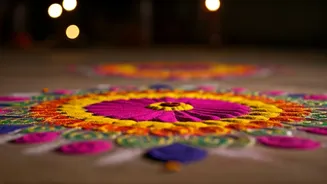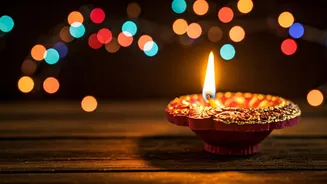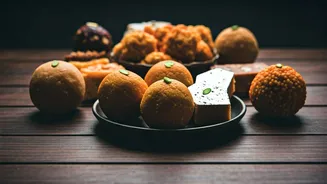Sweet Tooth Pleasers
The first group of offerings focuses on sweets. Modak, the steamed or fried dumpling, is a favorite of Lord Ganesha, and it symbolizes wisdom and prosperity.
Ladoos, particularly Motichoor Ladoo and Besan Ladoo, are another essential sweet, representing happiness and good fortune. Then comes Barfi, made from condensed milk and sugar. It is often flavored with cardamom or other spices, and it signifies the sweetness of life and success. These sweets are not just treats; they're integral parts of the prayers and rituals, signifying blessings and good fortune for everyone.
Fruitful Offerings
Fruits are another key component of the offerings, with bananas and pomegranates being particularly favored. Bananas, plentiful and easily available, symbolize abundance and fertility, while pomegranates, with their numerous seeds, represent prosperity and fertility. These fruits are often placed as offerings to the deities during the Diwali puja, as they are considered auspicious. They are also shared as prasad, symbolizing the sharing of blessings and prosperity with family and friends. Furthermore, they are a simple yet profound way of connecting with the divine through the purity of nature's gifts.
Savory Delights
Moving beyond sweets and fruits, certain savory dishes also play a role. The article also mentions that rice dishes, like kheer, made with milk and rice, are common offerings. They represent purity and nourishment. Another option is a simple vegetable curry, providing a balanced and wholesome element to the offerings. These savory foods demonstrate the variety in the food traditions of Diwali and how the festival reflects different tastes and traditions. All of the foods collectively create a balance of flavors and represent a holistic approach to celebrating Diwali.
Beyond the Plate
The food associated with Lakshmi and Ganesha extends beyond mere sustenance; it encapsulates devotion and appreciation. The preparation of these dishes is a form of worship, with families putting in their best efforts to honor the deities. The act of offering food, and then sharing it as prasad, builds bonds of community, reinforcing values of sharing and compassion. Diwali is a festival that's observed by people all around the world, and the food traditions show how cultural practices enhance the religious experience, making the celebration even more meaningful.
Symbolism in Eating
The choice of foods such as Modak and Ladoos is not accidental; each item carries symbolic significance. The round shape of the Ladoos, for example, represents completeness and perfection. Similarly, the Modak's shape represents the intellect, and its filling reflects all the good qualities. Eating prasad, whether a sweet, fruit, or savory dish, is a way to partake in these symbolic meanings. It is a gesture of faith that helps believers to establish a closer link with divine blessings. These traditions show how food becomes the medium through which deeper spiritual meanings are explored.
Sharing the Joy
Diwali is also a time for sharing and spreading happiness. Food plays a vital role in this aspect, as families and friends often come together to share meals. This tradition of sharing food promotes unity and strengthens social connections. The sharing of prasad and special Diwali dishes also extends beyond immediate family, showing kindness and inclusivity. The very act of preparing and sharing these foods is a testament to the community's commitment to giving back to society.
Food and Faith
Diwali's food traditions demonstrate the complex relationship between food and faith. The act of preparing food becomes a way of showing devotion, and the consumption of that food becomes an act of obtaining blessings. The selection of specific dishes, from sweets to fruits and savory items, is not merely random; each choice carries symbolic meanings related to prosperity, knowledge, and joy. This intersection of food and faith enhances the whole Diwali experience, making it a time for both spiritual reflection and communal bonding.
